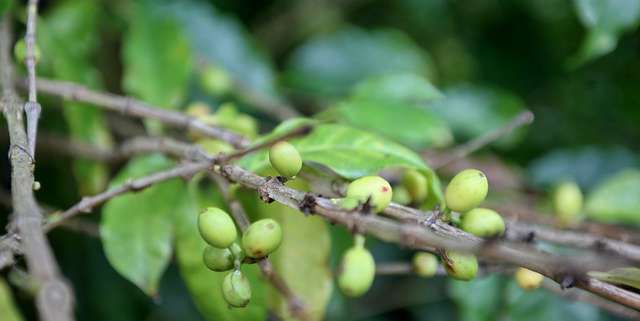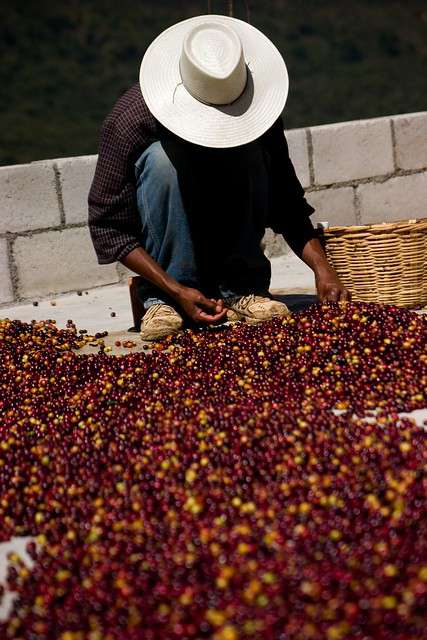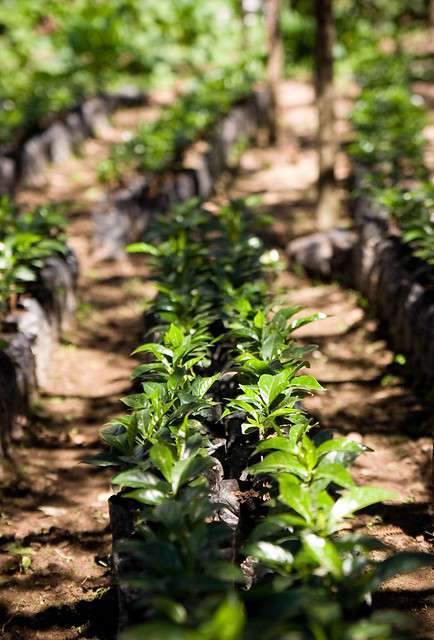
Coffee rust is a fungus that attacks the leaves of the coffee plant, eventually resulting in lower coffee bean yields and eventually killing the plant entirely. Image Source: Flickr user Cliff
We live in what I like to refer to as the “latte” generation, where coffee houses and cafes can be found on nearly every street corner. Even my personal budget has a portion set aside for my weekly coffee habit. But with news of the coffee rust epidemic wreaking havoc for major coffee producers around the world, price increases may soon change our coffee consuming culture.
Coffee rust is quickly becoming a major concern for many coffee growers, developers, and manufacturers. “Coffee rust is caused by the fungus Hemileia vastatrix which causes powdery yellow to orange spots on leaves. These leaf spots eventually turn brown and infected leaves drop from the coffee plant prematurely. Severe defoliation by coffee rust weakens the coffee plant, reduces yield and can eventually kill the coffee plant.”
Predominantly a problem in the Central and South American regions, coffee rust (also known as ‘la Roya’ or ‘Roya disease’) is quickly depleting crops in these areas, but the economic toll can be felt around the globe. Coffee beans from this region are unique and prized for their bold flavors and heavily developed sugar content, which help to create the deep rich color that coffee manufacturers covet when creating premium coffee blends. Coffee growers in this region pride themselves on the quality of their beans and are trying to find a solution to help maintain the integrity of their product. As of yet, no remedies have been able to tackle this insurmountable problem, but spectrophotometric technology offers steps toward an answer.



